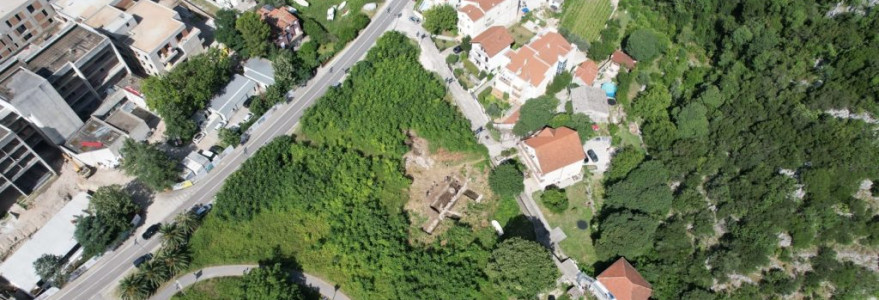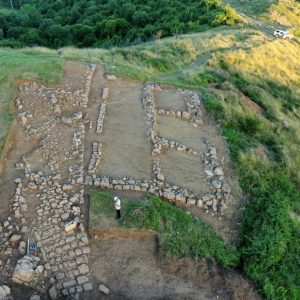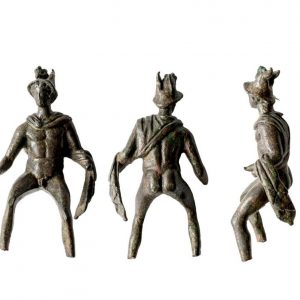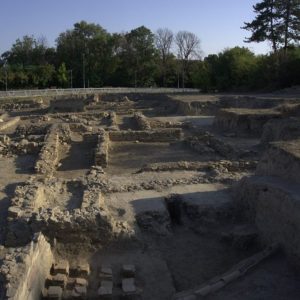Archaeologists from the Antiquity of Southeastern Research Centre at the University of Warsaw have completed their excavation campaigns, which have been ongoing since May. This year’s fieldwork and documentation was carried out in the Balkans.
A team of researchers from the Antiquity of Southeastern Research Centre at the University of Warsaw has completed work carried out in Albania, Bulgaria and Montenegro. The researchers’ discoveries made during the excavations included a storehouse of amphoras, a well and a double bath.
Excavations at Risan
Risan, known in ancient times as Rhizon and Risinum, lies in the Bay of Kotor and is the oldest settlement in the area. From the end of the 4th century BC, it was under strong Hellenistic influence. After the fall of the last Illyrian king, it was controlled by Rome and became part of the Empire in the early 1st century AD. During excavations, at the site where the city’s main square should have been, archaeologists from the UW discovered a wall dating back to the 3rd century BC.
“While in Roman times there was an ancient forum here with a monumental portico, of which the stylobate, part of the column shafts and powerful architraves have survived, in Hellenistic times, the square was smaller or planned differently”, Prof. Piotr Dyczek, director of the UW’s Antiquity of Southeastern Research Centre, explained, adding: “The building had a courtyard, in which there is a well-preserved well. This is the first of its kind discovered in Risan.”
During the works, the researchers also uncovered a room where the amphorae were probably stored. More than 50 decorated stoppers for these vessels were found there.
“Unknown city”
During excavations in the Albanian city of Bushati – the so-called “unknown city”, whose ancient name has not yet been established – archaeologists fully uncovered a large building dating back to the 4th century BC. This was hestiateron, a building where ceremonial receptions were held to celebrate religious and national holidays. The building was accessed by a wide ceremonial road ending in a monumental staircase.
“This is a unique discovery, as this type of building is hardly known from other classical sites. In Albania, or more precisely in ancient Illyria, it is, so far, the only such structure,” Prof. Piotr Dyczek said, adding: “Its importance is all the greater because it proves the interaction between the Illyrian elite living in the city and the Greek community. They adopted each other’s customs and part of their beliefs.”
The building was dedicated to Hestia, the Greek protector of the hearth.
Legion fortress
During archaeological works in the Bulgarian Late Antique town of Novae, scientists examined layers down to the level of military barracks. Complete and verified plans of the only early wood and earth structures on the Lower Danube were established. Originally, the entire camp was shifted 2 m to the east. Adjustments to its plan were made when the stone structures were built.
The researchers continued their work in the Centurion House of the 1st cohort, exploring the representative part. The interiors there had floors made of hydraulic mortar, painted borders and walls. The works in the bathhouse, which is one of the wings of the Centurion House, ended with a surprise.
“This is a very rare type of double bath. It most likely served both the centurion and the legionaries of the First Cohort, or at least the First Centurion,” Prof. Dyczek explained, adding: “This is an uncommon luxury in military camps.”
Among the discoveries there were also a large pool for hot water, a system of canals and water pipes, as well as a mysterious – due to the relicts discovered inside – room incorporated into the architectural system of the baths. In the room, there were small ounce lead weights and a game board made of ceramic plate and astragal.
“At this stage of research, we have three explanations: either it was oleoterion, a room used for relaxation after bathing and body care, or a place where doctors specifically caring for the legionaries of the First Cohort operated, or the room, which combined both of these functions,” Prof. Piotr Dyczek concluded.











